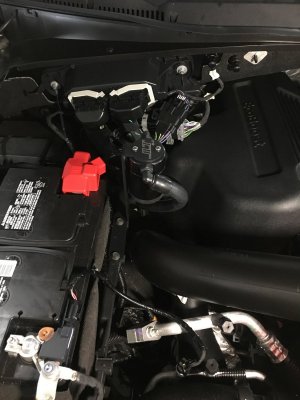like the old m4 direct impingement vs gas piston arguments...oh how I despise cleaning off my bolt carrier grps and especially revolver cylinders.

Sure the port injection likely keeps it very clean, but the catch can likely augments or assists.
would a majority of the blowby make it back to be burned in the engine prior to before it hits the intercooler?
Our engines have 2 suctions. 1) is the PCV system where I'd say 90% of the crap generated is from and 2) the CCV.
The PCV draws suction directly from the intake manifold so the rest of the intake system doesn't see it. I just dumps straight back into the intake manifold.
The CCV draws suction from the drivers side turbo. So that turbo and all the piping down stream from there will see it.
If you drive your truck pretty hard you can start to build up oil stuff from the CCV in the intake system. Easy place to spot it is the drivers side turbo outlet at the inter cooler connection point. This stuff can start to coat your sensors after a while. It's not a ton but at a bare minimum you should keep up with cleaning your sensors. I just replaced my IC at 8500 miles and I did have some oil pooled up in that silicone coupler since I only run a PCV catch can. I didn't realize at the time when I got mine that the 2 systems were separate.
Here's a break down of the catch can styles for our trucks.
No Valve (JLT). Collects only PCV blow by while "off" boost. When in boost the intake manifold is pressurized and therefore the engine does not draw a suction on the PCV system. This is how the truck is stock.
Check Valve (UPR). Collects PCV blow by while on and off of boost. Comes with an extra line with a check valve that draws suction from the turbo inlet so that the catch can collects while on boost.
Dual Can (Radium). Collects PCV and CCV blow by both on and off boost. Kit comes with 2 separate catch cans. The PCV side has a an extra line with a check valve like the UPR. The CCV does not require this since it already draws suction from the drivers side turbo and therefore will always be under vacuum.



